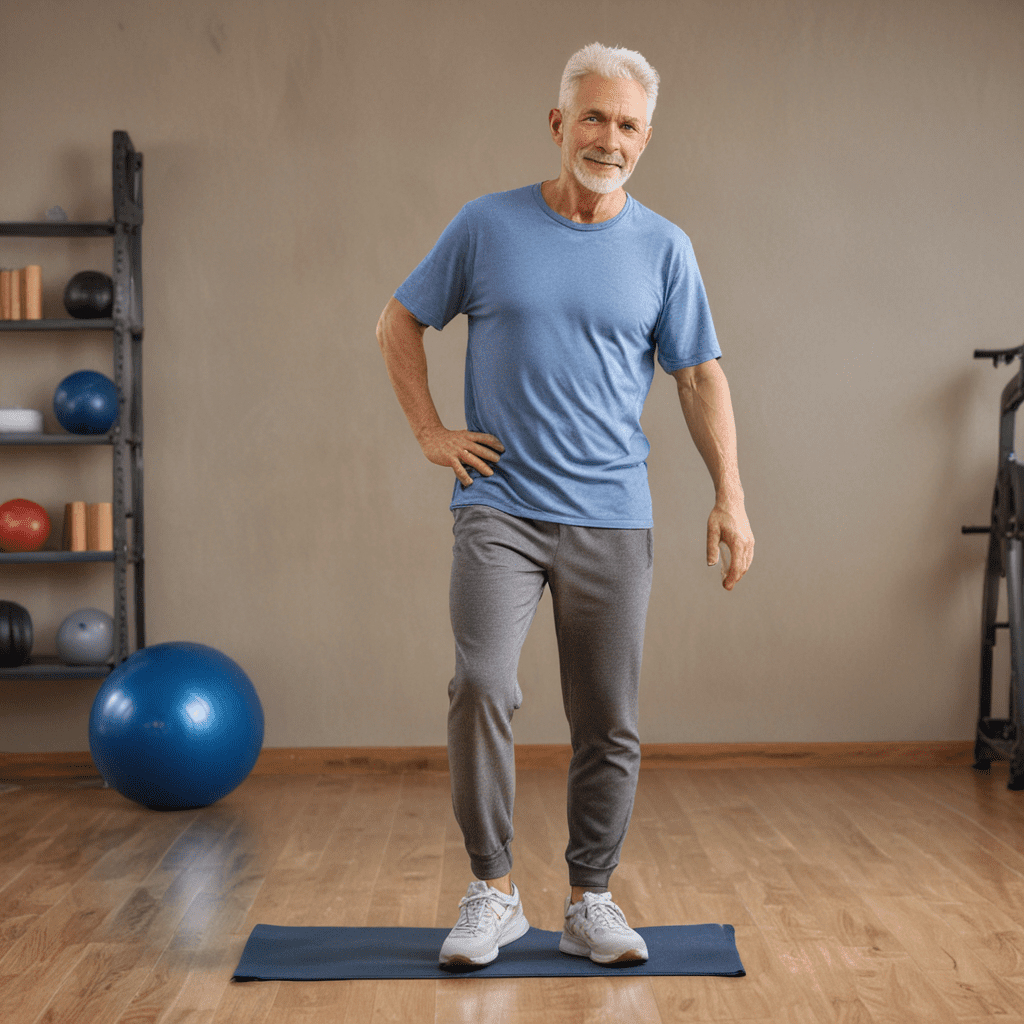
The Importance of Balance for Older Adults:
Balance, a fundamental aspect of mobility and coordination, plays a crucial role in maintaining independence and preventing falls in older adults. As people age, their sense of balance diminishes due to physiological changes, making them more vulnerable to accidents. Falls are a significant concern among seniors, causing injuries, disabilities, and reduced quality of life.
Risk Factors for Falls in Older Adults:
Several factors increase the risk of falls in older adults. These include:
- Age-related changes in sensory and motor systems
- Weakness and decreased muscle mass
- Reduced flexibility
- Cognitive impairment
- Certain medications
- Environmental hazards such as slippery surfaces or poor lighting
Benefits of Balance Exercises for Older Adults:
Regular balance exercises effectively improve stability and coordination in older adults. They help:
- Strengthen core and leg muscles, improving overall stability
- Enhance proprioception, or body awareness, which helps maintain balance
- Improve reaction time and agility
- Increase confidence and independence
- Reduce the risk of falls and fall-related injuries
Types of Balance Exercises:
Balance exercises can be categorized into three main types:
- Static exercises: These exercises involve maintaining a steady stance, challenging stability.
- Dynamic exercises: These involve movement while standing, such as walking heel-to-toe or side-stepping.
- Functional exercises: These mimic activities of daily living, such as getting up from a chair or reaching for objects.
Progression of Balance Exercises:
Balance exercises should be progressed gradually to avoid injury and promote effectiveness. Begin with easier exercises and gradually increase the challenge as balance improves. Consider consulting a physical therapist or fitness professional for personalized guidance.
Safety Considerations for Balance Exercises:
Safety is paramount when performing balance exercises. Choose a stable environment with adequate space and ensure there are no obstacles nearby. Use a chair or wall for support if needed. Listen to your body and rest when necessary. If you experience any pain or discomfort, stop the exercise and consult your doctor.
Sample Balance Exercise Routine:
- Static:
- Single-leg stand (30 seconds on each leg)
- Heel-toe raise (10 repetitions)
- Dynamic:
- Side-to-side steps (10 steps on each side)
- Forward and backward steps (10 steps in each direction)
- Functional:
- Sit-to-stand from a chair (10 repetitions)
- Reach for objects at different heights (10 repetitions on each side)
Tips for Incorporating Balance Exercises into Daily Activities:
- Stand on one leg while brushing your teeth
- Walk heel-to-toe while cooking or doing chores
- Perform side lunges while waiting in line
- Stand up from a chair slowly and steadily
- Practice reaching for items from different heights
When to Consult a Healthcare Professional:
Seek medical attention if you experience persistent dizziness, vertigo, or significant mobility problems. A doctor can evaluate your balance and determine if there are underlying medical conditions that need attention.
Conclusion: Benefits and Safety of Balance Exercises for Preventing Falls in Older Adults:
Balance exercises are essential for older adults to maintain stability, reduce the risk of falls, and improve overall well-being. By following the guidelines for progression, safety, and incorporating them into daily activities, seniors can effectively improve their balance and prevent fall-related injuries. It is crucial to consult a healthcare professional for guidance and to address any underlying medical conditions that may affect balance.
FAQs:
Q: How often should I perform balance exercises?
A: Aim for 2-3 sessions per week.
Q: Can I do balance exercises if I have knee or ankle problems?
A: Consult a doctor or physical therapist for modified exercises that are safe for your condition.
Q: How long should each balance exercise session last?
A: Start with 10-15 minutes and gradually increase the duration as your balance improves.
Q: Will balance exercises help me improve my posture?
A: Yes, improved balance can positively impact posture.
Q: What are some other ways to improve balance?
A: Tai chi, yoga, and dancing are activities that can also enhance balance.


